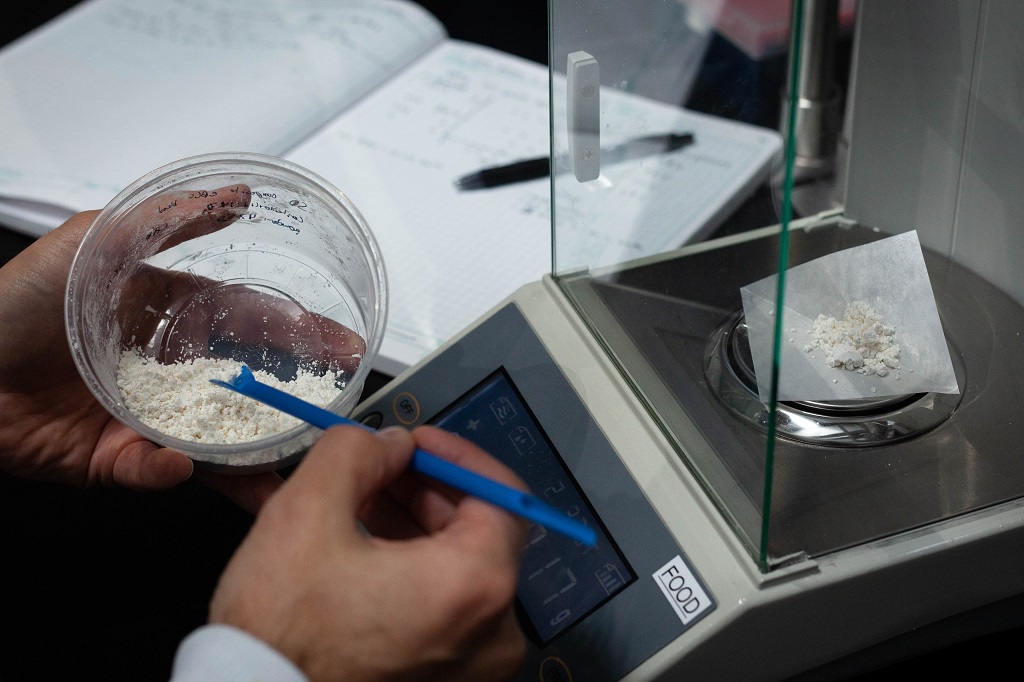Here’s a question I never expected to be asking: What’s the difference between Advil and Sour Patch watermelon candy?
The question arises not because I have a headache and a craving for an alternative remedy, but out of a couple of recent legal disputes based on complaints of “slack fill.”
Misleading? Sour Patch Watermelon packages are among those accused of underfilling
Slack fill, if you haven’t been paying attention, is one of the hot causes of food-related lawsuits over the past couple of years. You know intuitively what it means—packaging that makes false promises about how much of the product you’re buying. It’s officially defined (for food purposes) in the Code of Federal Regulations, Title 21—Food and Drugs, Section 100.100—Misleading containers, which states in part that “a food shall be deemed to be misbranded if its container is so made, formed, or filled as to be misleading.” (In theory, this regulation preempts any state-level regs, but, as is so often the case, California has its own law, which is fairly similar, and it’s possible to bring suits under a variety of state consumer protection laws.)
This doesn’t mean, however, that we should go out and sue all the potato chip manufacturers. The law allows for “functional slack fill,” a category that includes packages that are less than fully filled because the product (such as chips and cereal) settles during handling, packaging that’s needed to protect the product, and a few other categories. It’s legal to have an oversized package if it has to be that big to hold required labeling, for example, or if there’s a functional reason why the package has to be the size it is. (Tamper-evident lids on jars, for instance, require a bit of head space between the product and the lid or they won’t work properly.)
It may sound like an easy standard to meet, but the temptations to cheat are enormous, especially as companies try to cut costs and maintain margins by charging the same for a bit less product—the way the ice cream industry did a few years back when many “pints” were reduced to 14 ounces. And the temptations to take legal action against “shrink ray” packaging are pretty substantial, too. The law is more settled than in the other hot area—suits against products that claim to be “natural.” With a national law in effect, it’s relatively easy to put together a class for a class action suit, and local authorities can rack up substantial revenue in the form of fines and settlements. Last year, Consumer Reports noted that Yolo County, California, population 200,000, had settled 27 slack-fill suits against the likes of Coty, CVS, Hershey, Johnson & Johnson, Mars, and Walgreens.
And there have been an increasing number of private lawsuits. Barilla got hauled into U.S. District Court in New York this summer for using the same size package for six ounces of one kind of pasta as it does for eight of another. McCormick was charged by a competitor and a group of consumers with using the same can it had been using for eight ounces of ground pepper to sell six. The company argued that it was OK, because the package clearly stated—in rather small letters—how much it contained, and also that the package size didn’t constitute advertising or promotion. A judge in Minnesota last week refused to throw out the suit, stating that McCormick’s position “defies common sense and law.” And a judge held up a $12 million slack-fill settlement against Starkist on the grounds that it might unfairly limit future claims against the company.
There was even one widely reported suit against Starbucks, in which a disgruntled customer argued that the coffee chain was being deceptive by claiming that a “venti” iced drink was 24 ounces, when in fact part of the 24 ounces consisted of ice. That’s not exactly a slack fill suit—and it went nowhere. “If children have figured out that including ice in a cold beverage decreases the amount of liquid they will receive,” wrote the judge in the case “the Court has no difficulty concluding that a reasonable consumer would not be deceived into thinking that when they order an iced tea, that the drink they receive will include both ice and tea and that for a given size cup, some portion of the drink will be ice rather than whatever liquid beverage the consumer ordered.”
And then there was Sour Patch. This past summer Jose Izquierdo, a consumer, brought suit against Mondelez, owner of the Sour Patch brand, asserting that the company sold 28 pieces of its Sour Patch Watermelon candy in a box that could hold 50, and that he “relied on the size of the thin cardboard box to believe that the entire volume of the packaging of the [Sour Patch Kids box] would be filled to capacity,” according to court documents.
The company, unsurprisingly, called bullshit on Mr. Izquierdo, pointing out that the weight of the candy was clearly printed on the box (which it is) and that even the number of pieces was on the labeling (which it is if you know where to look and have decent eyesight). Besides, it argued, you can feel the candy through the box, and, besides, the size of the box “also serves a functional purpose of allowing the box to stand and be displayed at a movie theater concession stand or a store shelf.”
(Pause for a moment and savor that last argument: “We put so little candy in the box that it would keel over on the shelf if it was a reasonable size. So we have to mislead customers.”)
Flash! A federal judge just decided a case with some striking parallels. A consumer sued Pfizer, arguing that the bottle of Advil he bought had too little Advil and too much empty space. The bottle, of course, listed exactly how many tablets were inside, and the judge said the complaint “didn’t pass the laugh test.”
That decision clearly means the Sour Patch suit has to be thrown out, argued Mondelez. No it doesn’t, says the plaintiff.
Which brings us back to my original question: Is a pain-reliever the same as a candy? I don’t know about you, but I find it kind of puzzling. I totally accept that an Advil pack with a label specifying the number of doses inside is perfectly adequate for my shopping needs. Why do I feel a bit dubious about packaging that tells me I’m buying 3.5 ounces of little imitation watermelon slices? Why shouldn’t an accurate weight measurement be enough?
Part of it, I suppose, is that Advils fall into the utilitarian, logical part of life. I don’t feel much emotion at all when I buy them, though I may when I take them. Candy, snacks, all of those problematic foods are a different matter. Buying them is all about emotion—bigger box, more pleasure, and label reading be damned. That’s a stupid way to buy things, but I don’t think I’m alone in succumbing to that pattern more than I’d like.
In his book Thinking, Fast and Slow, the ground-breaking psychologist Daniel Kahneman spends a good deal of time talking about how hard it is for humans to actually think rationally when the impulsive, intuitive part of the mind thinks it has things covered. His description of how people act raises the real possibility that for some things, a number on a label will never be enough—and Sour Patch Watermelon candies, as weird and repellent as I may find them, probably fall into that category.
So apparently we’ll have to go on litigating over package sizes. Which I hate. We need regulations like the labeling laws to protect us against egregious cheats (and against ourselves). But once we concede that we’re all dopes who can’t read the label, we’re committing ourselves to a process where the courts spend countless years and dollars listening to complaints that translate to “I didn’t know the iced tea included ice,” “I thought this box of candy was going to be different from every box of candy I’ve ever bought in my life,” and “There wasn’t as much pepper this time.”
I’m not defending butt-headedness on the part of manufacturers; McCormick and Barilla have lost my business for the foreseeable future. But it’s a hard world out there. There’s lots that we need to be spending our resources on, and I’m pretty sure that squeezing the air out of a box of Sour Patch doesn’t rank very high on any rational person’s list.
And now, I think I need a couple of Advils. I don’t really care how big a bottle they come in.












